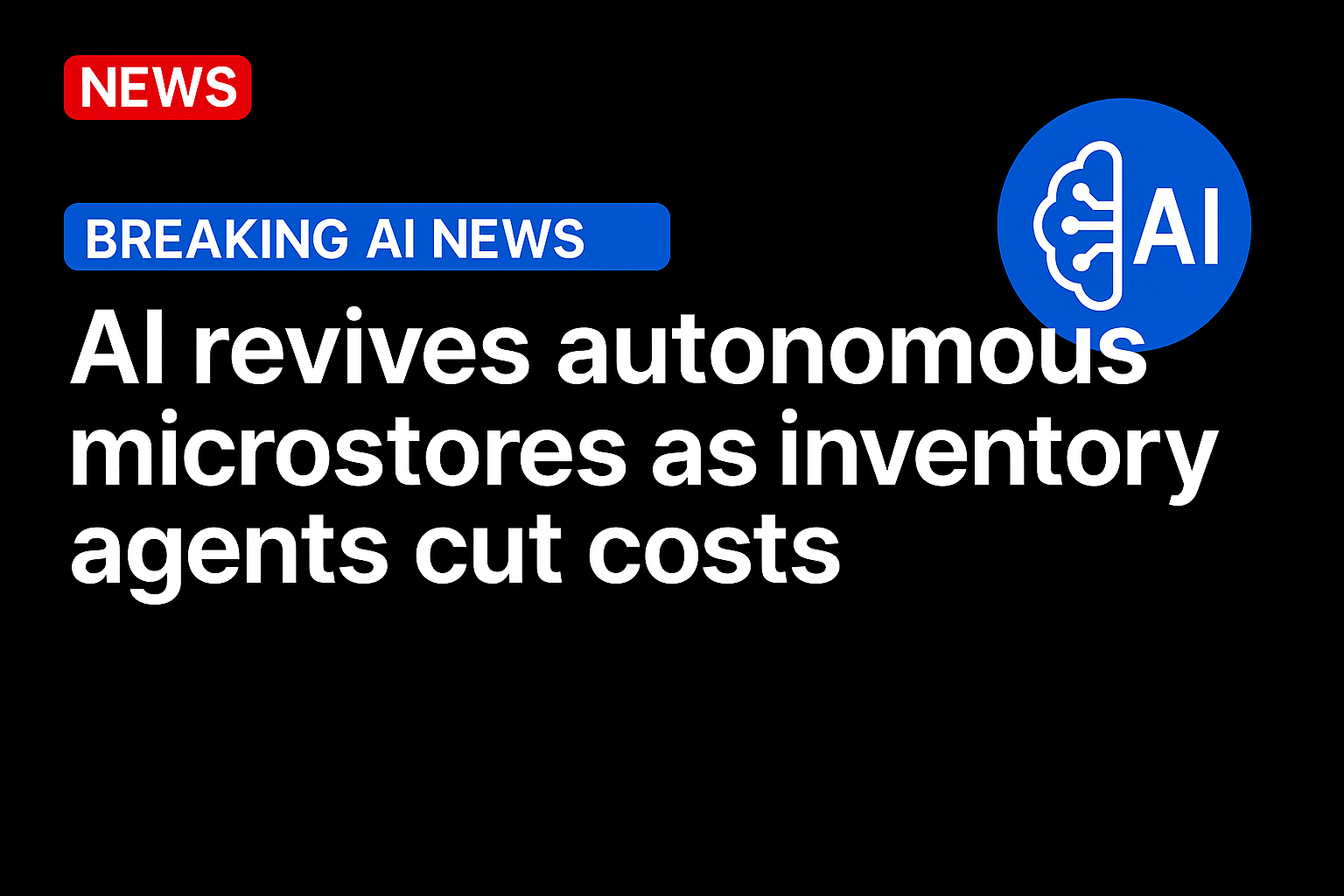
Autonomous microstores are returning to the retail market as artificial intelligence (AI) solves the accuracy and cost issues that stalled the first generation. New systems use stronger computer vision, lightweight agentic inventory models and simpler robotics to track items, forecast demand and run without dense sensor grids or continuous human oversight.
Retailers are moving from small pilots to practical deployments as evidence grows that the model can operate reliably at lower cost.
The first wave of microstores depended on pressure shelves and large sensor arrays that required constant calibration and often produced inconsistent reads. AI is changing that. Today’s vision models handle low light, tight aisles and cluttered shelves with much greater stability.
A study from University of Michigan shows how modern vision architectures reduce occlusion errors and cut reliance on expensive multi-sensor hardware. These improvements eliminate much of the fragility that made early autonomous stores difficult to scale.
AI Makes Microstores Operationally Viable
An example of the new model is VenHub’s rollout in Los Angeles. The company opened a 24/7 smart store at Los Angeles Union Station as part of its transit-hub deployment. The autonomous store runs on vision-driven checkout, robotic picking and real-time inventory agents. The store manages SKU counts, customer interactions and demand forecasting using a compact AI stack designed for unattended operation.
Underlying technologies are also maturing. Modern vision systems track items and customer movement without pressure shelves or heavy sensor grids. The move toward software-driven perception lowers installation costs and increases reliability.
Inventory automation is strengthening the model further, and this layer is becoming one of the most important differentiators between legacy autonomous retail formats and the second-generation systems now entering the market.
For example, Brain Corp’s robotic shelf-intelligence platform, ShelfOptix, captures shelf data, detects misplaced goods and updates inventory in real time. It also detects shelf gaps, tracks planogram deviations, and records count discrepancies as they happen rather than after the fact. Continuous monitoring is critical for unattended formats, which depend on clean data to avoid stock errors and unexpected downtime.
PYMNTS Intelligence has tracked the same shift across unattended retail. The latest analysis shows that AI and connected devices are giving operators real-time visibility into transactions, shelf conditions and store performance.
The research also finds that consumers are moving toward frictionless formats as cashless payments become standard in self-service environments. Retailers are using these systems to reduce manual oversight, identify issues earlier and stabilize small-footprint locations that operate without staff. The findings point to a broader acceleration of autonomous retail as technology replaces labor-intensive monitoring.
A Second Wave Driven by Costs, Reliability and Proof of Deployment
Labor cost pressure and changing consumer behavior are major drivers in this second wave. Retailers want small, high-availability formats that do not expand headcount. Microstores meet that need with compact footprints and predictable operating costs. AI agents manage replenishment, forecast demand and enforce planograms, which reduces manual workload.
Reliability is also improving. Earlier microstores often failed when sensors misread items or checkout systems broke down. A PYMNTS Tracker shows how modern AI-IoT systems detect anomalies early and support remote fixes. Field deployments such as VenHub’s demonstrate extended periods of unattended operation, something the first-generation formats could not achieve.
Costs have shifted in favor of adoption. Modern microstores use fewer sensors, rely on smaller models running on compact hardware and use robotics with fewer moving parts. These improvements shorten installation cycles and reduce maintenance demands.
Retailers are also widening their use of smart-commerce orchestration tools that coordinate sensors, cameras and store-management systems in real time. Recent PYMNTS coverage shows that self-serve retail is benefiting from platforms that integrate item tracking, temperature sensors, motion alerts and automated merchandising rules into a single command layer.
Source: https://www.pymnts.com/




